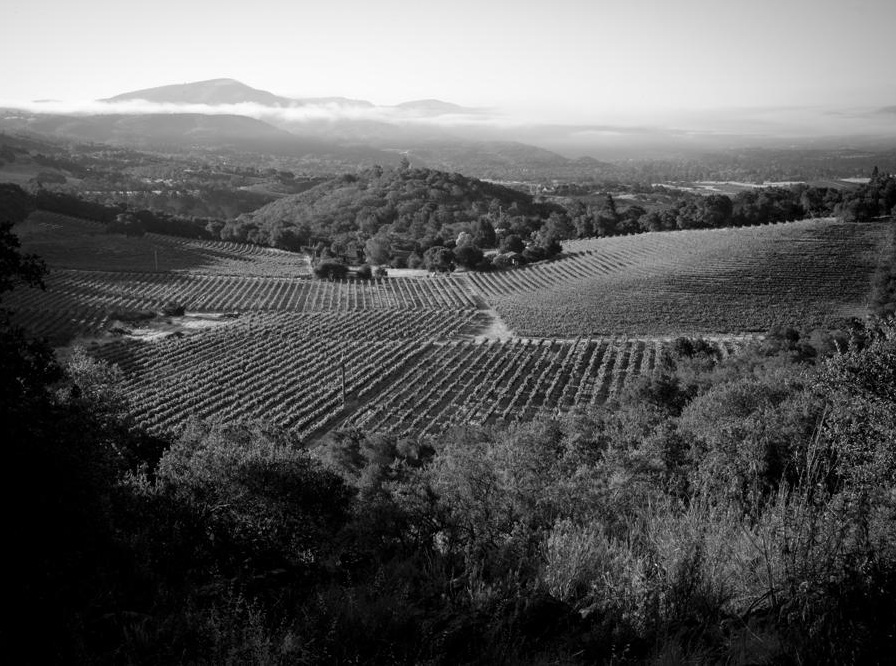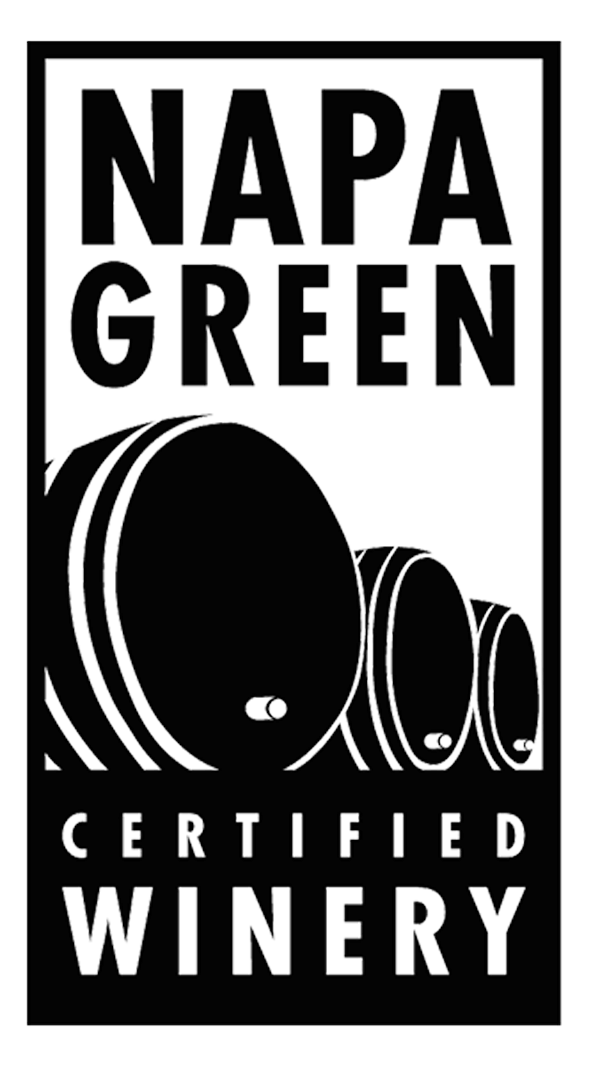History

Originally a land grant to Salvador Vallejo, this rocky hillside became one of Napa Valley’s first vineyards when Dr. Pettingill planted it in 1870. A globetrotter and bon vivant—dentist, brewer, winemaker, and horse breeder—he was larger than life. With nothing but a hand saw, he quarried stone from the land and built a winery where he crafted 7,000 gallons of wine each year. He pioneered the practice of aging bottles for four years before release, establishing a legacy of patience and care.
A century later, the estate was reborn when Henri and Claire restored the old stone cellar, vineyards, and carved caves deep into the hillside for winemaking. Today, White Rock carries this heritage forward, crafting wines with patience, integrity, and a profound reverence for the land.
Farming
14 acres of Chardonnay on the valley floor, comprised of diverse plantings of Clone 4, 96, 76, and old clones of both Wente and Martini, with the oldest vines dating back 35 years. Cabernet Sauvignon is planted on both sides of the steep valley hillsides. The hillsides are planted predominantly to clone 7, with a small amount of clone 337. Additional plantings of Merlot, Cabernet Franc, and Petit Verdot complete the Bordeaux varietals, with Syrah, Malbec, and Viognier selectively placed for the limited production of single-varietal wines.
Because we practice natural farming, the estate has never been subjected to herbicides, pesticides, or fumigants. In the winter, we plant “green manure” crops such as bell beans, rye, and clover, which help to nurture the soil through the cold, wet months. Vine spacing and trellising were designed from the start to produce loose clusters that hang freely in a light, aerated canopy, which reduces the need for chemicals and improves the ripening process. As the property is passed through generations, the family will strive to remain responsible stewards of the property that is its’ home.
Terroir

Situated on the eastern side of the Napa Valley, approximately 300 feet above the valley floor, White Rock Vineyards is defined by its volcanic soils and bedrock. A 64-acre valley shaped over millennia to form a natural bowl, the soil substructure is compressed volcanic ash, holding little nutrients, and yielding small berries which produce deep, intense, and rich concentrated flavors.
Caves

In 1987, the Vandendriessche family bored a 6,000 square foot cave into the volcanic hillside of White Rock Vineyards. Henri worked with Engineer Alf Burtleson, who later designed caves for FarNiente, Newton, Pine Ridge, and Robert Sinskey, among others, using an old coal mining machine. A constant 60 degrees, the cave provides the ideal temperature for the production and cellaring of quality wines. Unique to White Rock, Henri designed a series of niches in the caves, where all red wine is stacked and aged for 2-3 years after bottling. Each niche holds between 4-6 thousand bottles, allowing White Rock to cellar 45,000 bottles at any time.
Winemaking

The style of the wines produced at White Rock reflects the values that the Vandendriessches have cultivated their entire lives – balance, complexity, intensity, and ageability.
data-start=”106″ data-end=”311″>“I strive to grow balanced wines. Balance between the terroir of our estate and the characteristics of each vintage. Balance between the fruit, the tannin, and the oak. Balance in making wines that people will be able to enjoy now and wines that will stand the test of time.”
With an average of 20-year-old vines, the estate is low-yielding, with an average of 2 tons per acre. The tiny berries, hand-harvested by our team in small baskets, are intense and concentrated, consistently displaying bold tannins and strong mineral characteristics, due to the volcanic ash soil.
“My approach to winemaking is to be as gentle as possible. I work from a position of respect for the quality of the vineyard soils and the hard work of my brother and his crew, to bring out the natural flavor of the wines without adding acid, tannins, heavy oak, or other winemaker tricks. After a quick cold soak, we ferment the wines predominantly with native yeasts. The wines are then aged in 1/3 new, 2/3 neutral French oak for 12 to 26 months. This gives the tannins time to soften up and for the aromas to intermingle and reach the level of complexity we are looking for. After bottling, we age the wine in the cave for an additional 2 to 4 years before release. I aim to produce powerful, terroir-driven driven balanced wines year after year.”
Sustainability

At White Rock Vineyards, the land is the heart of our family’s legacy. For generations, we’ve cared for this vineyard as stewards of a living ecosystem, guided by a deep respect for nature
and community.
We believe everything is connected—the soil, the vines, the fruit, and the wines. By fostering biodiversity, revitalizing our soils, and practicing integrated pest management, we work in harmony with the land. These methods build resilient vines, elevate fruit quality, and allow each vintage to express its unique character.
For us, sustainability isn’t a label—it’s a way of life. It means nurturing the earth that nurtures us and ensuring this land flourishes for generations to come. Along the way, we are proud to have received recognition affirming our commitment to responsible farming and truly distinct wines.
White Rock Vineyards is proud to have received the following certifications
in recognition of our efforts.
 |
 |
 |
 |
 |
 |
